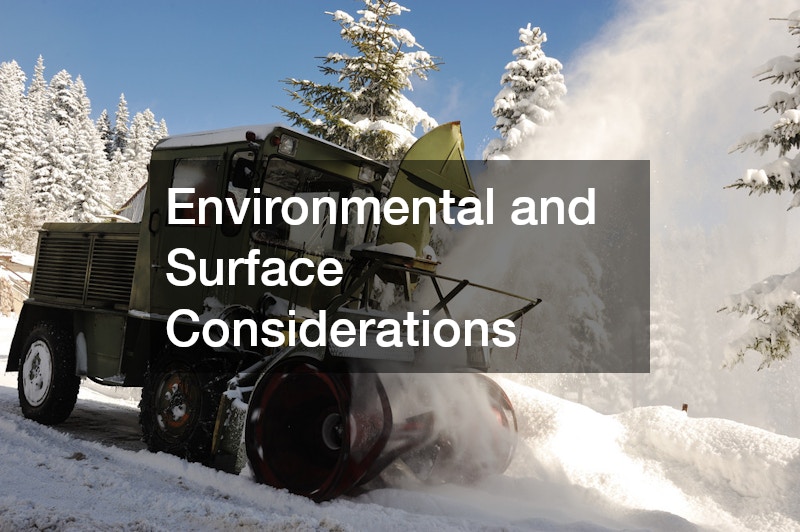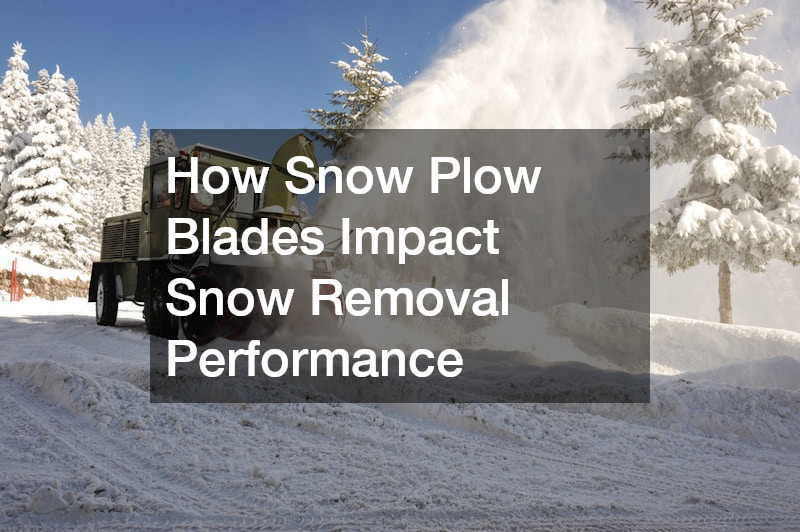Winter storms can strike quickly, leaving roads, driveways, and parking lots covered in heavy snow. For municipalities, commercial properties, and homeowners who rely on plowing equipment, efficiency is key. One often overlooked factor that directly influences snow removal performance is the type and condition of snow plow blades. These components may seem simple, but their design, material, and maintenance dramatically affect how effectively snow is cleared and how much time and effort is required to keep surfaces safe and accessible.
Blade Material Matters
The material of snow plow blades significantly impacts their durability and performance. Common materials include steel, polyurethane, and composite blends, each with its own advantages and drawbacks. Steel blades are known for their strength and ability to handle heavy, compacted snow, making them ideal for municipal or commercial use. However, they can scratch asphalt or concrete surfaces if not used carefully. Investing in the right material not only improves snow removal efficiency but also reduces long-term maintenance costs.
Polyurethane blades, on the other hand, are softer and more forgiving on surfaces, reducing the risk of damage. They are particularly useful for residential driveways or delicate pavement. Composite blades combine the benefits of steel and polymer, offering durability while minimizing surface wear. Choosing the right material based on the type of surface and snow conditions is critical for optimal performance. Considering seasonal variations and typical snowfall amounts can also guide material selection for maximum effectiveness.
Blade Design and Angle
The design and angle of a plow blade are equally important in determining snow removal efficiency. The curvature, height, and width of the blade affect how snow is pushed, lifted, or thrown. A properly curved blade helps direct snow off the roadway or driveway, reducing the need for multiple passes. Even minor adjustments to blade curvature can make a noticeable difference in clearing speed and snow displacement.
Adjustable blades allow operators to change the angle depending on conditions. For example, during a light snowfall, a narrower angle may suffice, while heavy or wet snow may require a steeper angle to ensure proper displacement. A blade that is worn, bent, or incorrectly positioned can lead to uneven clearing, leaving snow behind, and increasing wear on both the plow and the surface being cleared. Regularly checking and calibrating the blade angle ensures consistent performance across different snow conditions.
Maintenance and Wear
Regular maintenance is crucial for maintaining high snow removal performance. Worn blades, loose bolts, or rust can drastically reduce efficiency. Inspecting blades for cracks, chips, or excessive wear before each use ensures the plow operates at peak capacity. Replacing cutting edges or adding wear strips can extend blade life and maintain smooth snow movement. Routine maintenance also helps prevent unexpected breakdowns during critical snowstorms.
Lubricating moving parts and keeping the mounting system secure also play a role in overall performance. Neglecting maintenance not only reduces efficiency but also increases the risk of equipment damage and safety hazards for operators and the public. In essence, a well-maintained plow performs faster, more accurately, and with less strain on the vehicle. Operators who prioritize maintenance can save time, money, and effort throughout the winter season.
Environmental and Surface Considerations
Different snow plow blades perform differently depending on environmental and surface conditions. Wet, heavy snow places more strain on the plow and requires stronger, well-aligned blades to push efficiently. Ice or compacted snow may require specialized cutting edges or carbide tips to break through frozen layers without excessive scraping. Being aware of local climate patterns helps operators select blades suited for typical winter challenges.
Additionally, surface type matters. Asphalt, concrete, gravel, and cobblestone all respond differently to plow pressure. A blade that is too rigid or sharp can damage softer surfaces, while a softer blade may wear down too quickly on rougher terrain. Understanding these nuances allows operators to select and maintain blades that maximize efficiency while minimizing damage to the environment or property. Matching blade type and adjustment to surface conditions ensures the best balance between performance and preservation.
Snow plow blades are more than just simple tools; they are vital components that influence the speed, efficiency, and safety of snow removal operations. From material choice to design, angle, maintenance, and adaptation to specific surface conditions, every aspect of a blade’s performance matters. Operators who understand these factors can reduce operational costs, extend equipment life, and ensure cleaner, safer pathways during winter storms. Investing in the right blades and maintaining them properly is not just a convenience—it is essential for effective snow removal. Ultimately, well-chosen and well-maintained blades allow operators to handle winter challenges with confidence and consistency, no matter the severity of the storm.

